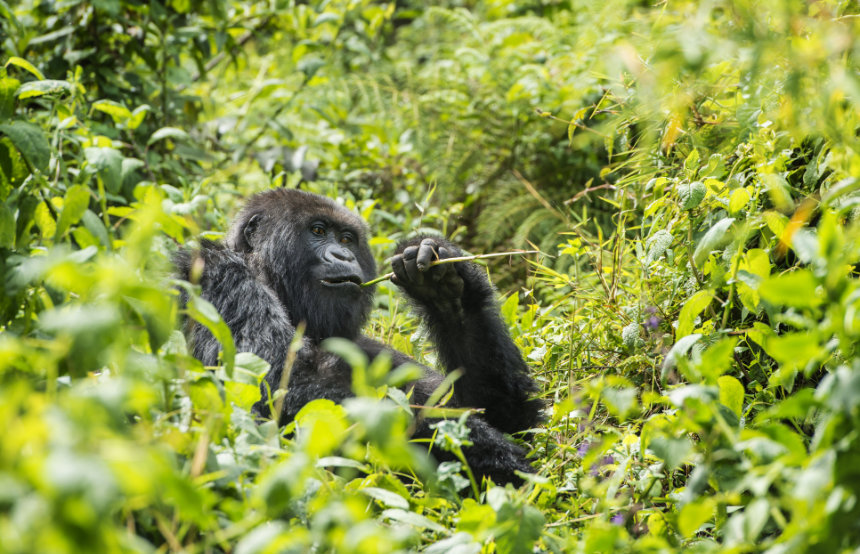
Published 28th Feb. 2024
Reading time
Gorillas take the crown as the largest primate, their muscular bodies standing up to a mighty six feet tall. But beneath their burly exterior, you might be surprised to find a gentle jungle giant. Just like humans, they can laugh, feel sadness and have complex social systems. Despite their shy nature, dense forest habitat and tendency to travel long distances making them difficult to study, there’s no denying their magnificence. Want to learn more about these incredible creatures? Read on to discover five fascinating gorilla facts.
Try as they might, not even contestants at ‘The World’s Strongest Man’ can compete with the strength of gorillas. Weighing in at an average of 450lb, the silverback gorilla (an adult male) is about as strong as 20 adult humans combined – the ultimate tug-of-war champions. But it seems not everyone is convinced. Mike Tyson, a former heavyweight world champion, admitted to offering a zookeeper $10,000 to fight a silverback. His offer was, unsurprisingly, declined.
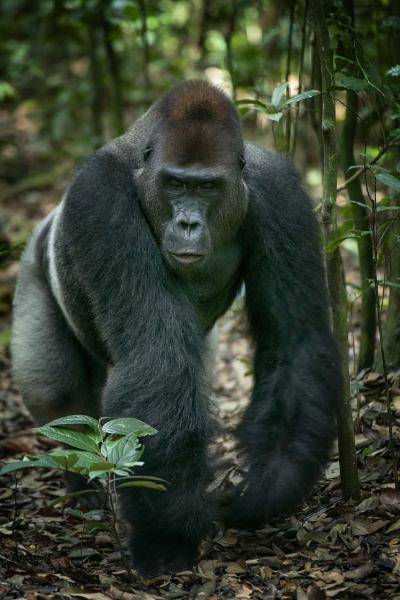
Despite their strength – and character defamation in King Kong – gorillas are considered the gentle giants of the jungle. As seen in Tarzan (from behind teary eyes), these great apes are affectionate towards each other, gentle with their young and far calmer than their chimpanzee counterparts. However, attacks towards humans may still occur if they are provoked, threatened or surprised. Their chilled-out nature was experienced first-hand by Dr Dian Fossey, a woman who lived with the mountain gorillas of Rwanda – as their friend and protector – for more than 20 years.
Gorillas don’t just share 98% of their DNA with humans; they also mirror aspects of our social structures. These impressive primates are known to live in family groups (called troops) ranging in size from five to 50, with a dominant silverback male and several females and their offspring. Like humans, they interact with a ‘dispersed extended family’ of aunts, grandparents and cousins, and even mirror early human tribes by interacting with groups of gorillas they aren’t related to. One of our safari specialists, Jamie, comments that the biological and social connection humans share with gorillas is something you can 'really feel when watching the youngsters interact with their family groups'.
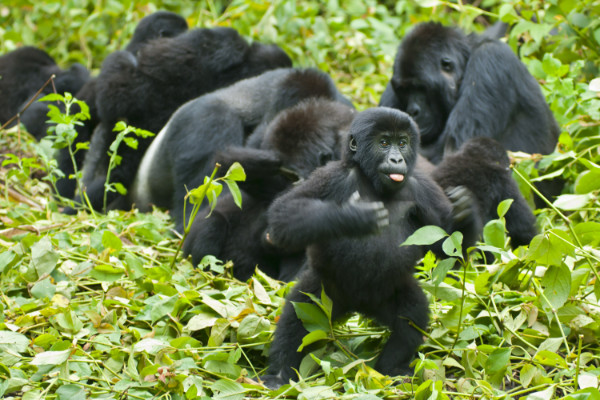
You won’t catch a gorilla on Mastermind anytime soon, but don’t overlook their intelligence. They’re known to use some nifty tricks that prove they’ve got brains behind the brawl: dipping sticks in water to gauge the depth of a river crossing; using bamboo as ladders to help infants climb; and eating ants with a stick to avoid being stung. Communication has also been mastered, with over 25 vocalisations used to signify alarm, distress, aggression, contentment and group coordination. If that’s not enough to convince you of their brains, consider Koko, a gorilla who learned over 1,000 gestures in sign language. She also seemed to have a sense of humour and human-like emotions, and her language comprehension skills were similar to those of a young child.
Last up is a diet-based gorilla fact, and these muscly mammals are here to prove you don’t need meat to be buff. Around 85% of their diet is plant-based, consisting of bamboo shoots, fruit, stems, bark and leaves. However, they can be selective foragers, only eating certain plant parts and using their agile lips and fingers to pick out the tasty parts. Some gorillas also have a taste for critters and will break open termite nests to eat the protein-packed larvae. Delicious.
Written by Evie Buller.
Practical advice and inspiration for your next trip
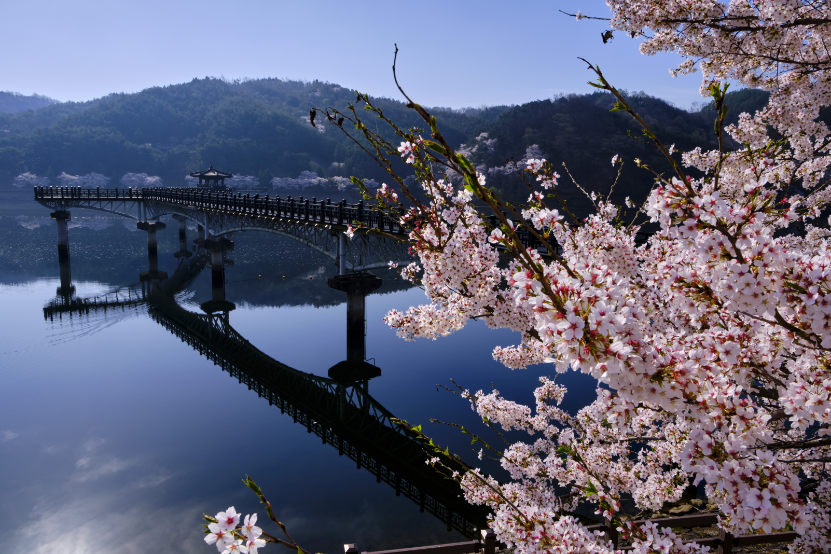
When you think of cherry blossom, we’d bet you picture Japan and its springtime Sakura. Now, we’re not denying that Sakura season is beautiful, but its reputation means it draws flocks of visitors, contributing to overtourism and disrupting local life. To combat this, we’re on a mission to shout about South Korea’s cherry blossom. Known locally as beotkkot, South Korea’s cherry trees bloom at a similar time to Japan’s and are just as breathtaking – without the pesky crowds (and skyrocketing costs).
20th October 2025 - South Korea The Natural World
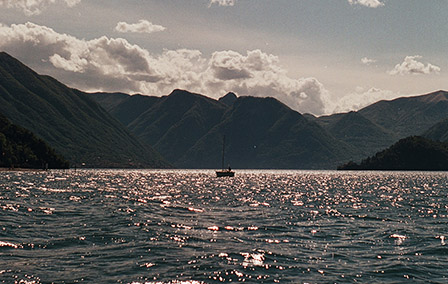
Since the beginning of time, humans have been drawn to lakes, whether it’s to appreciate their beauty or see first-hand the places where monsters such as Nessie (Scotland) and Ogopogo (Canada) are said to reside. Fortunately, we’re spoilt for choice, from Lake Como’s bluer-than-blue waters to Moraine Lake’s magnificent mountainous backdrop. Fancy a trip to one of the world’s best bodies of water? Read on for our shortlist of the most beautiful lakes in the world… Lake Como,
9th May 2025 - The Natural World
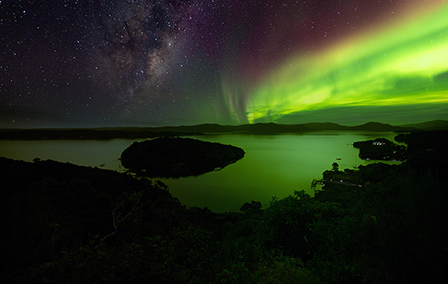
Is it always possible to see the Southern Lights? No. Is it worth trying? Without a shadow of a doubt. The Southern Lights (aurora australis) are notoriously more difficult to see than their northern counterparts, but that only makes the swirling rivers of greenish blue even more spectacular when you do catch a glimpse of them. The best time to see the aurora australis is during the Southern Hemisphere’s darker, cooler months – from March to September – when the skies are clearest and the nights are longest.
14th March 2025 - The Natural World

Our team of destination experts will get to know you and your unique requirements for your holiday

We work with you to build an ultra-personalised holiday itinerary with your choice of accommodation, experiences and activities

All of our holidays include little extras designed to make a big difference to your trip, from fast-tracking you through airport check-in and security to our network of local Concierges